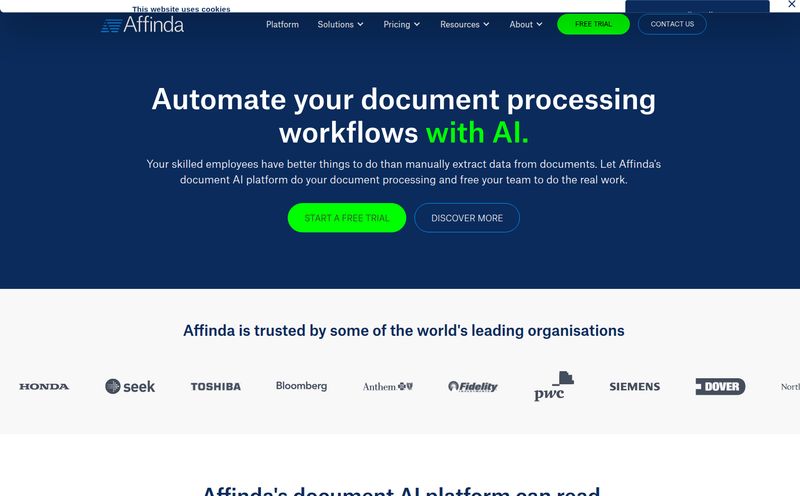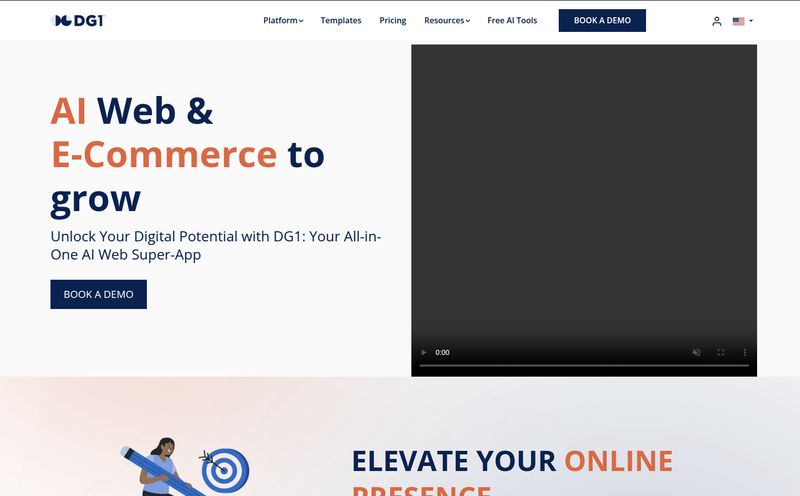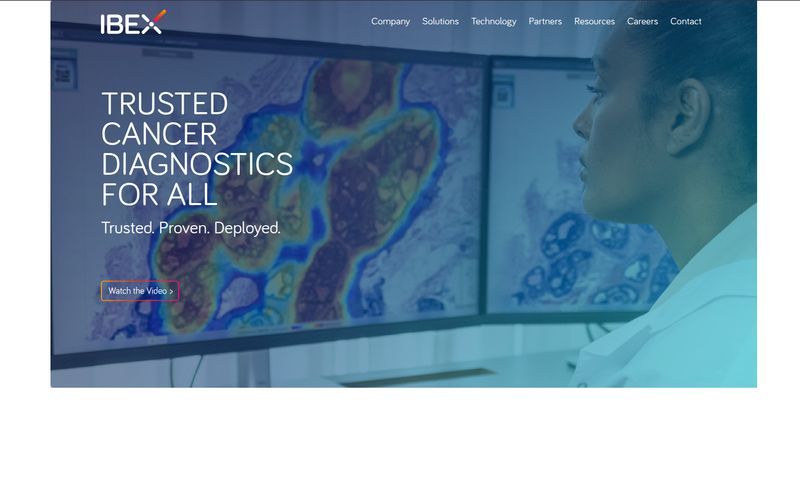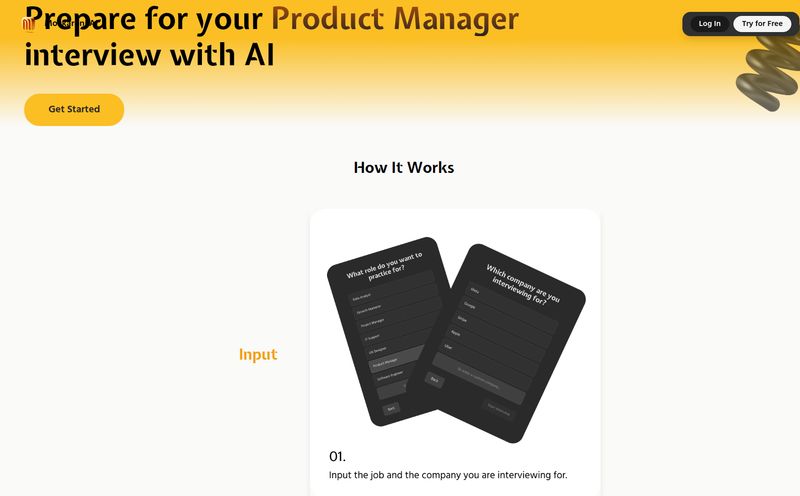I remember it like it was yesterday. It was 11 PM, my eyes were burning from the blue light of my monitor, and I was on page 37 of a LinkedIn search for a “Senior Backend Engineer” who knew Go and also, preferably, had experience with Kubernetes. My brain was mush. My copy-paste outreach message was starting to feel less like professional outreach and more like desperate spam. I thought to myself, there has to be a better way.
We’ve all been there, right? The endless grind of sourcing. It's the part of recruiting that nobody really loves but is absolutely critical to success. So when tools powered by artificial intelligence started popping up, promising to automate the whole mess, my ears perked up. One of the names that kept coming up was Fetcher. They claim to use AI to find and engage the best talent for you. But as a seasoned pro in this space, I'm naturally skeptical. Is it just another shiny object, or is it a genuine game-changer? I decided to take a closer look.
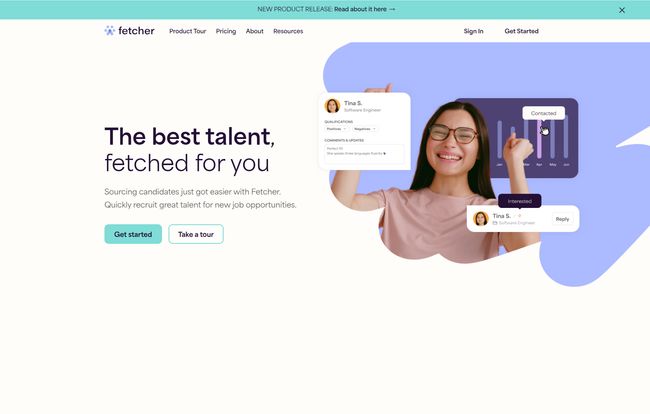
Visit Fetcher
So What Is Fetcher, Actually?
Let's get one thing straight: Fetcher isn't just a glorified search engine that scrapes candidate profiles from the web. I've seen plenty of those. The idea behind Fetcher is a bit more sophisticated. You can think of it less like a search bar and more like a dedicated, 24/7 sourcing assistant. You give it the specifics of the role you're trying to fill—the skills, the experience level, the location, everything—and its AI goes to work.
But it doesn't just dump a list of 500 potential profiles in your lap and say “good luck.” It curates a list of qualified passive candidates and then, and this is the interesting part, it starts the outreach for you through automated email sequences. It’s designed to handle both outbound sourcing (finding people who aren't actively looking) and inbound management (reviewing the people who apply to you), which is a pretty neat combination.
The Features That Genuinely Caught My Eye
A platform is only as good as its features, and Fetcher has a few that are worth talking about. It's not just a laundry list of tech buzzwords; some of these address real pain points for recruiters.
Automated Sourcing Meets AI-Powered Review
This is the core of the platform. The automated sourcing is the engine. You define your search, and Fetcher’s AI builds a pipeline of candidates. But here's the kicker: its effectiveness is directly tied to how good your search criteria are. It’s a classic case of garbage-in, garbage-out. If you provide vague or contradictory requirements, you're going to get a mixed bag of candidates. But if you’re specific and thoughtful, the quality can be shockingly good. It forces you to be a better recruiter by demanding clarity upfront. I kind of like that.
The AI-powered applicant review is also a solid touch. For those high-volume roles where you get hundreds of applicants, it helps surface the most relevant ones, saving you from sifting through a mountain of resumes that miss the mark.
A Real Tool for Building a Diverse Talent Pipeline
Okay, let's be real. Every company is talking about diversity, equity, and inclusion (DEI) but building a truly diverse pipeline is hard work. It means intentionally looking outside our usual networks. Fetcher has specific diversity search criteria that allow you to source from underrepresented groups. This is a huge deal. It helps mitigate the unconscious bias that can creep into manual sourcing. Is a tool going to solve systemic inequality? Of course not. But can it give you a practical way to broaden your talent pool and find incredible candidates you would have otherwise missed? Absolutely. For me, this is one of its most compelling features.
Automated Engagement That Doesn't Feel Too Robotic
I'll admit, I cringed when I first heard “automated email sequences.” We’ve all received those terrible, generic recruiting emails. But Fetcher’s system is customizable. You can, and absolutely should, tweak the templates to reflect your company's voice and the specific role. My advice? Spend a good hour making these templates your own. Add a sentence about a recent company achievement or a link to a cool project the team worked on. A little personalization goes a long way in making the automation feel more human. Don't just set it and forget it.
Integrations That Just Make Sense
No recruiter wants to live in a dozen different platforms. The fact that Fetcher integrates with major Applicant Tracking Systems (ATS) and CRMs, plus email and Slack, is a massive practical win. It means the candidates it finds can be piped directly into your existing workflow, whether you're using Greenhouse, Lever or something else. This avoids the nightmare of manual data entry and ensures your whole team stays in the loop. It’s a basic requirement for any modern recruting tool, and they've ticked the box well.
The Good, The Bad, and The Pricey
No review is complete without a no-nonsense breakdown of the pros and cons. So here’s my take.
On the plus side, the time savings are undeniable. The hours I've spent on LinkedIn could be used for more strategic work, like talking to hiring managers or actually interviewing candidates. The ability to build diverse pipelines is a huge moral and business win. And having one platform to handle both outbound and inbound is efficient. It really streamlines the top of the funnel.
However, it's not all sunshine and roses. The biggest hurdle for many will be the price. This probably isn't the right tool for a brand new startup or a one-person recruiting shop on a shoestring budget. Its effectiveness also leans heavily on you, the user. If your search criteria are lazy, your results will be too. And while the automation is great, there’s a risk of losing that personal touch if you don't manage the email campaigns carefully. It's a powerful tool, but not a magic wand.
So How Much Does Fetcher Cost?
This is the million-dollar question, isn't it? As is common with enterprise-grade B2B software, Fetcher doesn't splash its prices all over the website. You have to contact them for a quote. They offer a tiered structure, which gives you a hint about who they're targeting.
| Plan | Best For |
|---|---|
| Growth | Individuals or small teams who are just getting started with automated sourcing or have modest needs. |
| Amplify | The full-service solution designed for flexibility, including everything in the Growth plan plus more advanced features. |
| Enterprise | Larger organizations needing enterprise-grade security features like Single Sign-On (SSO) and SOC 2 compliance. |
To get the specifics, you'll have to head over to their pricing page and request a demo or volume pricing. It’s an extra step, but it probably means they tailor the package to your company's specific size and needs.
My Final Verdict: Is Fetcher the Future of Recruiting?
So, do I think Fetcher is the silver bullet that will solve all our recruiting woes? No. But I do think it represents a significant shift in how we can approach sourcing. It's a force multiplier. It takes the most tedious, time-consuming part of our job and puts it on autopilot, freeing us up to do the human parts of recruiting: building relationships, selling the company vision, and closing candidates.
Who is it for? I'd say Fetcher is ideal for mid-sized to large recruiting teams who are feeling stretched thin and want to increase their candidate pipeline without just adding more headcount. It's for companies that are serious about DEI and want a tool to support those initiatives.
Who is it probably NOT for? If you're a solo recruiter on a tight budget, the investment might be too steep. It's also probably not a fit for organizations that operate on a very low volume of hiring or that have a philosophical attachment to a 100% manual, high-touch sourcing process for every single role.
Ultimately, AI isn't here to replace recruiters. It's here to augment them. And from what I’ve seen, Fetcher does a pretty compelling job of being that tireless, data-driven assistant we've all wished for on those late nights staring at a search screen.
Frequently Asked Questions About Fetcher
- How does Fetcher actually help with diversity recruiting?
- Fetcher includes specific search filters that let you intentionally source candidates from underrepresented backgrounds. This helps you build a more diverse initial talent pool, which is the first and most critical step in improving diversity in hiring outcomes.
- What tools does Fetcher integrate with?
- It integrates with a wide range of popular platforms that recruiters use daily. This includes major Applicant Tracking Systems (ATS) like Greenhouse and Lever, CRMs, as well as your email client (like Gmail or Outlook) and Slack for notifications.
- Will Fetcher replace our human recruiters?
- Definitely not. Think of it as a tool for recruiters, not a replacement. It automates the repetitive top-of-funnel tasks (sourcing, initial outreach), so your team can focus on the high-value, human-centric parts of the job like interviewing, relationship building, and closing candidates.
- Is Fetcher only for large companies?
- Not exclusively. Their "Growth" plan is designed for individuals or smaller teams. While the cost may be a consideration, it's not strictly an enterprise-only tool. It's best suited for any team that feels its sourcing efforts are a major bottleneck.
- How good is the AI? Do I have to check its work?
- The AI is powerful, but you're still the pilot. You should always review the candidates it surfaces to calibrate its searches and ensure quality. The better your feedback, the smarter the AI gets for your future roles. It’s a partnership between your expertise and the tool's automation.
Conclusion
Look, the world of talent acquisition is noisy, and there's always a new tool promising to revolutionize everything. Fetcher stands out because it focuses on solving a very real, very painful problem: the sheer amount of time and effort that goes into finding good people. By blending smart automation with features that support critical goals like diversity, it makes a strong case for itself. It’s not a set-it-and-forget-it solution, but for the right team, it could be the difference between constantly feeling behind and finally getting ahead of the hiring curve.
